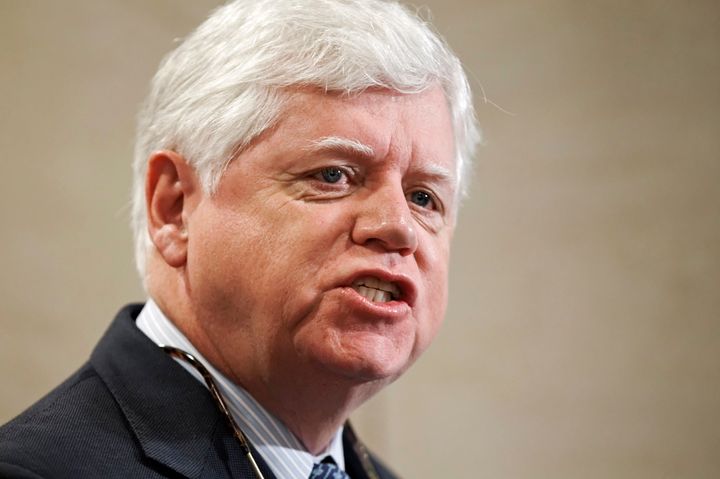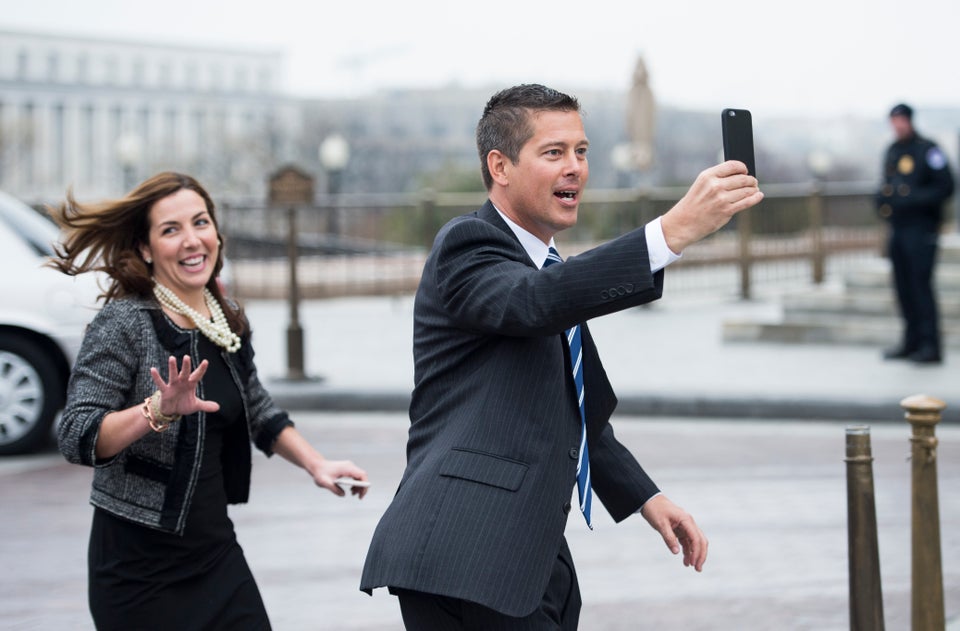
In less than a decade, mainstream Democrats in Congress have gone from entertaining Social Security cuts to almost universally endorsing the program’s expansion.
With Democrats in charge of the House for the first time since this tidal shift upended party orthodoxy, senior members of Congress are setting the stage for the legislative chamber to increase Social Security benefits, bringing a onetime liberal pipe dream a step closer to law.
Democratic Reps. John Larson (Conn.), Conor Lamb (Pa.) and Jahana Hayes (Conn.) are introducing the Social Security 2100 Act on Wednesday, legislation that would expand Social Security benefits across the board and prolong the program’s solvency for the next 75 years and beyond. The legislation finances a more generous benefit and cost-of-living adjustment formula, a reduction in income taxes on benefits and the closure of Social Security’s long-term funding gap by lifting the cap on income subject to payroll taxes and raising those tax rates.
The bill is being rolled out on the 137th birthday of President Franklin D. Roosevelt, who established Social Security as part of his New Deal in 1935.
The bill already has the support of more than 200 House Democrats, including House Ways and Means Committee Chairman Richard Neal (D), who relied on Social Security payments to help pay for college after his father died.
That puts the bill just shy of the 218-vote mark it would need to pass the House.
Larson introduced identical legislation during the last Congress, when GOP rule ensured it was dead on arrival. As incoming chairman of the Ways and Means subcommittee on Social Security, he is now equipped to shepherd its passage.
“We’ve been in the wilderness since 2010. This is a great opportunity,” Larson said.
Larson expressed confidence that the legislation would pass on the House floor after going through the standard legislative process, complete with hearings that shed light on the issue of retirement security.
“It’s a tribute to the grassroots effort that’s gone into this,” he said, singling out the contributions of Social Security Works and the National Committee to Preserve Social Security and Medicare.
In the Senate, Sens. Richard Blumenthal (D-Conn.) and Chris Van Hollen (D-Md.) have sponsored a companion bill, but Republican control almost certainly precludes it from consideration. The legislation’s passage in the House is nonetheless an opportunity for Democrats to showcase what they would deliver if they had unified control of the federal government.
“People are OK taking a little bit of the burden on themselves as long as they understand we’re dedicating the money to Social Security.”
- Rep. Conor Lamb (D-Pa.)
The legislation raises benefits by creating a minimum payment that’s 25 percent greater than the federal poverty level as well as modestly adjusting the benefit formula so that more of a person’s pre-retirement income will be replaced. Larson estimates that the new benefit formula would increase the average payout by 2 percent. His legislation would not change the age at which a retiree can collect benefits.
The legislation also replaces the consumer price index, used to calculate the annual cost-of-living adjustment (COLA), with an index that better reflects seniors’ expenses, particularly the higher costs of health care. The Social Security Administration’s chief actuary projects that the bill’s Consumer Price Index for the Elderly (CPI-E) would, on average, increase the COLA by about 0.2 percent.
To finance the ambitious legislation, Larson would subject earnings of $400,000 or more to the Social Security payroll tax.
Currently, Americans pay Social Security taxes only on the first $132,900 that they earn based on a cap that rises with average wage growth. The new legislation would leave income between $132,900 and $400,000 untaxed. Over time, the present-day cap would rise to $400,000, at which point all earnings would be subject to the tax.
Larson’s legislation would also raise the payroll tax by 1.2 percentage points on both employees and employers, phasing in the change over 24 years.
At the same time, the bill cuts income taxes on Social Security benefits for those who receive them by raising the income threshold at which they would be taxed. Under the legislation, 12 million beneficiaries ― out of nearly 63 million total ― would receive a tax cut, according to Larson.
Still, the bill’s payroll tax increase is likely to be the biggest political challenge for Larson and other Democrats trying to advance the bill.
To try to preempt that line of attack, Larson is fond of brandishing a Starbucks cup at every event promoting the bill. He calculates that for a worker making $50,000 a year, the tax hike amounts to just 50 cents a week ― or one $4.50 cup of Starbucks every nine weeks.
Larson, who represents Hartford, known as the nation’s insurance capital, also wants Americans to view payroll taxes as an insurance premium rather than a tax, noting that its official name is FICA, or the Federal Insurance Contribution Act tax.
It helps Larson’s case that his allies hail from ideologically diverse branches of the party. The co-chairs of the House’s Expand Social Security Caucus that Larson started in September include Reps. Debbie Dingell (Mich.) and Raúl Grijalva (Ariz.), members of the Congressional Progressive Caucus; Rep. Terri Sewell (D-Ala.), a member of the business-friendly New Democrat Coalition; and Lamb, who does not belong to any ideologically driven bloc.
Lamb, perhaps more than anyone, attests to the low political risk of backing higher Social Security taxes to pay for solvency and benefit expansion. He endorsed the policy during his March special election win in a southwest Pennsylvania district where Donald Trump won by more than 19 percentage points in 2016.
“People are OK taking a little bit of the burden on themselves as long as they understand we’re dedicating the money to Social Security,” he said.
Lamb referred to his co-sponsorship of the bill as the fulfillment of a campaign promise and said he wants whoever the Democratic presidential nominee is to endorse the legislation.
Because Social Security is statutorily prohibited from borrowing to pay benefits, it faces a funding shortfall as more baby boomers retire in the coming years.
Social Security is projected to have enough revenue to pay out full benefits until 2034, according to the program’s nonpartisan actuaries. After that, absent legislation tweaking the program’s finances, it will only be able to pay out about three-quarters of promised benefits.
Conservatives tend to favor closing Social Security’s funding gap through benefit cuts; progressives prefer plans that raise more revenue for the program.
But Larson’s bill represents the culmination of efforts by left-leaning groups to look at Social Security as an essential vehicle for retirement security in a time of stagnant wages, depleted home equity and volatile 401(k) plans.
The average monthly Social Security benefit is just under $1,250. Without it, 22 million more Americans would live in poverty.
Larson holds out some hope that President Donald Trump, who promised to protect Social Security from cuts as a candidate, might strike a deal to close Social Security’s funding gap with House Speaker Nancy Pelosi (D-Calif.). The Connecticut congressman compared the unlikely duo to President Ronald Reagan’s partnership with House Speaker Tip O’Neill (D-Mass.) in 1983, the last time Congress passed legislation reforming Social Security.
“Nancy Pelosi may be exactly the person to drive this across the goal line with the person down on Pennsylvania Avenue,” Larson said.

